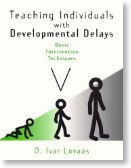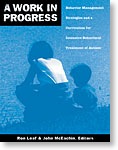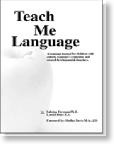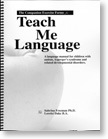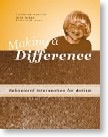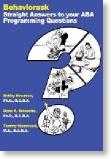Toilet Training: Autism Speaks Gets Amnesia
17/09/11 18:38
Autism Speaks is preparing a toilet-training information kit for parents of children with autism. This is a very good idea because toilet training is one of the first hurdles that a parent of a child with autism experiences either before, or soon after, the diagnosis. Many parents wonder if they will ever successfully toilet train their child. Unfortunately, in their autism toilet training article they refer to a study that found, “[children with autism] needed a year and a half of training, on average, to stay dry during the day and more than two years to become bowel trained.” (emphasis added).
A year and a half! No, that’s not a typo. Why would anyone hold up as a model to parents of children with autism a study where the researchers are manifestly incompetent and their intervention is functionally a failure? Why race to the bottom?
It is important for you to know that your child is either not toilet-trained because s/he doesn’t understand or have the skills yet OR s/he understands but does not want to change a behavior that is already comfortable. Either way, you will need to use the same technique to successfully toilet train .
There is no reason that your child cannot be toilet-trained; however, it may take different skills from the ones that you already possess. Luckily, there are a couple of resources that will help you along the way.
The best method available was pioneered by Nathin Azrin and Richard Foxx in 1971 (note: the academic terms for developmentally delayed people were different back then). They were originally working with developmentally disabled adults who were institutionalized, and these researchers were wildly successful. They also did research on typically developing children and wrote a best-seller that is still available today [Toilet Training in A Day]; however, their work on toilet-training children with developmental delays is much more useful for our purposes. Since their original research in the 1970s, behaviorists have moved the field forward through research and utilized some of the techniques first pioneered by Azrin and Foxx. Now there are practitioners in the field of Applied Behavior Analysis who can help you toilet train your child based on these techniques. You may be able to do this yourself; however, it can be difficult!
First, I recommend finding a Board Certified Behavior Analyst (BCBA) with expertise in autism to develop a program for your child; these professionals exist in every major city, in many small cities and towns in North America, & across the industrialized world.
In addition, there is a devise that you can purchase to help you in your toilet-training program called the Night Hawk. It is a high tech. wet alarm that works wirelessly and sends out an audible reminder. Although intended to be used at night, it can be used at all times to make your toilet training program more effective. The Night Hawk helps the child understand the connection between urination and running to the bathroom to get the alarm to stop. You may not have to use this device; however, if your child is getting ready to enter kindergarten and is still not toilet-trained, you might want to think about using this system since it can speed up the learning process considerably! This concept was first devised and tested in 1971, but not available on the market until decades later.
It is very important that a child with autism be toilet-trained prior to entering kindergarten because a non-toilet-trained child will generally be stigmatized. The goal is always to create a world where the child can participate as much as possible in the wonderful experiences that typically developing children are provided, and toilet-training is prerequisite to that.
With expertise and perseverance you will succeed. Importantly, the process should take two weeks or less, not a year and a half!
A year and a half! No, that’s not a typo. Why would anyone hold up as a model to parents of children with autism a study where the researchers are manifestly incompetent and their intervention is functionally a failure? Why race to the bottom?
It is important for you to know that your child is either not toilet-trained because s/he doesn’t understand or have the skills yet OR s/he understands but does not want to change a behavior that is already comfortable. Either way, you will need to use the same technique to successfully toilet train .
There is no reason that your child cannot be toilet-trained; however, it may take different skills from the ones that you already possess. Luckily, there are a couple of resources that will help you along the way.
The best method available was pioneered by Nathin Azrin and Richard Foxx in 1971 (note: the academic terms for developmentally delayed people were different back then). They were originally working with developmentally disabled adults who were institutionalized, and these researchers were wildly successful. They also did research on typically developing children and wrote a best-seller that is still available today [Toilet Training in A Day]; however, their work on toilet-training children with developmental delays is much more useful for our purposes. Since their original research in the 1970s, behaviorists have moved the field forward through research and utilized some of the techniques first pioneered by Azrin and Foxx. Now there are practitioners in the field of Applied Behavior Analysis who can help you toilet train your child based on these techniques. You may be able to do this yourself; however, it can be difficult!
First, I recommend finding a Board Certified Behavior Analyst (BCBA) with expertise in autism to develop a program for your child; these professionals exist in every major city, in many small cities and towns in North America, & across the industrialized world.
In addition, there is a devise that you can purchase to help you in your toilet-training program called the Night Hawk. It is a high tech. wet alarm that works wirelessly and sends out an audible reminder. Although intended to be used at night, it can be used at all times to make your toilet training program more effective. The Night Hawk helps the child understand the connection between urination and running to the bathroom to get the alarm to stop. You may not have to use this device; however, if your child is getting ready to enter kindergarten and is still not toilet-trained, you might want to think about using this system since it can speed up the learning process considerably! This concept was first devised and tested in 1971, but not available on the market until decades later.
It is very important that a child with autism be toilet-trained prior to entering kindergarten because a non-toilet-trained child will generally be stigmatized. The goal is always to create a world where the child can participate as much as possible in the wonderful experiences that typically developing children are provided, and toilet-training is prerequisite to that.
With expertise and perseverance you will succeed. Importantly, the process should take two weeks or less, not a year and a half!


